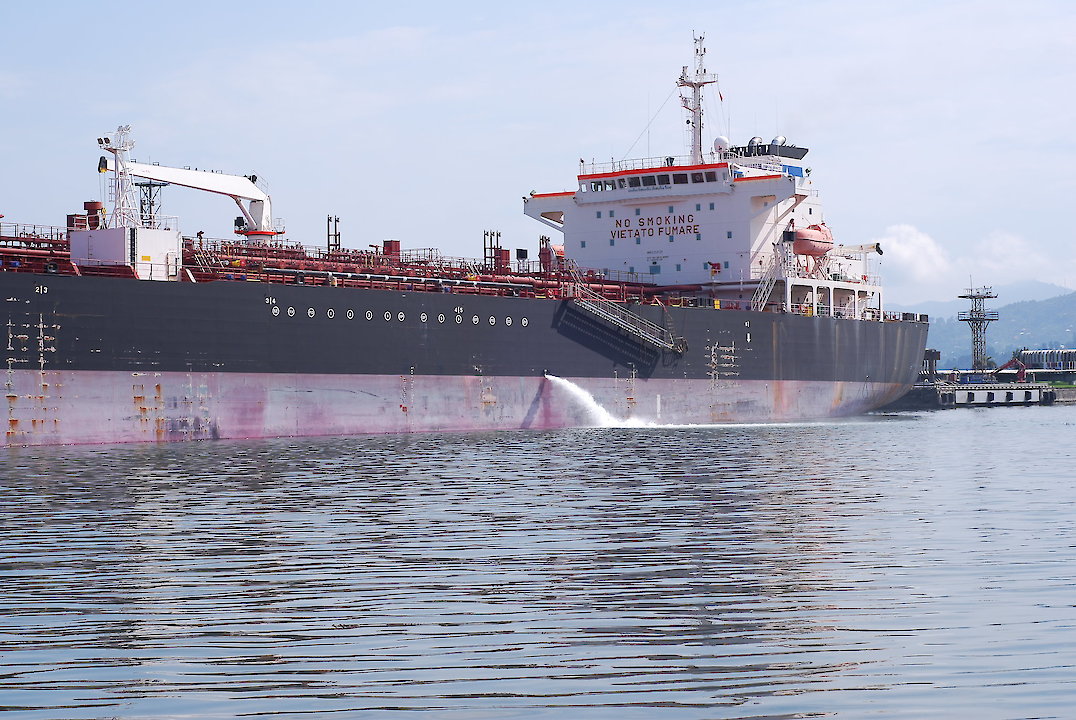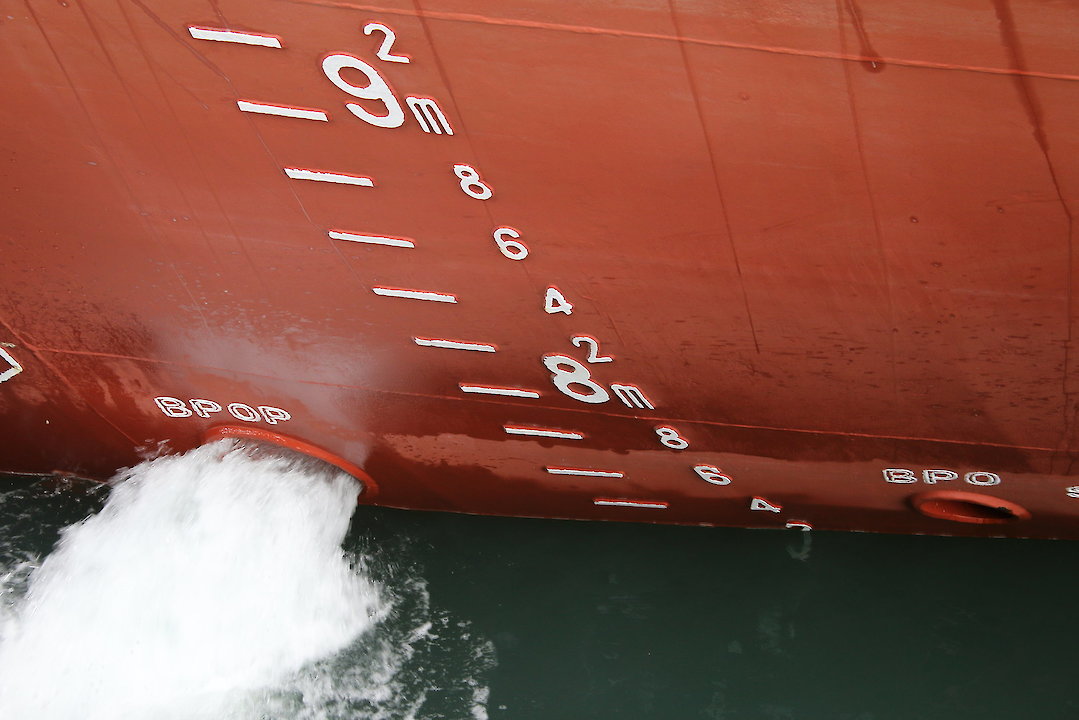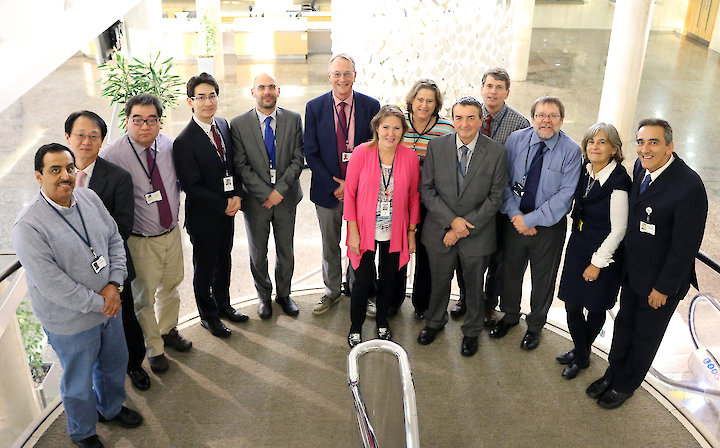Lead agency: International Maritime Organization
Overview
Shipping organizations that wish to use ‘active substances’ to disinfect their ballast water must submit proposals to the Ballast Water Working Group 34, a multidisciplinary team of experts in fields of chemical risk assessment, ecotoxicology, occupational hygiene, toxicology, ship architecture and engineering. WG 34 evaluate the risks that each proposed ballast water management system (BWMS) may pose to the environment, human health, property and/or resources. Applicants of BWMS are requested to send a complete dossiers with all relevant information on that system To IMO for review by the WG 34. Based on the advice of the WG 34, MEPC decides upon the approval of the BWMS.
The Group held during the years 9 so-called Stock-taking Workshops (STW) on several items like the development of the Methodology for information gathering and conduct of work of the GESAMP-BWWG, the development of a database with data on 44 substances that are regularly occurring in BWMS evaluations and the development of specific guidelines for measuring the Total Residual Oxidants (TRO).
Background
Many ships store large amounts of water in their hull (known as ballast water) to improve strength, stability and manoeuvrability. However, aquatic organisms (e.g., bacteria, small invertebrates, eggs, cysts and larvae of various species) often live in ballast water and when the ship travels to new locations, these organisms are transferred with it.
The transferred species may establish a population in the new environments (where there are often no natural predators) until they become invasive, out-competing native species for resources and multiplying into pest proportions. The spread of invasive species is now recognized as one of the greatest threats to the ecological and economic wellbeing of the planet and is one of the main drivers of biodiversity loss.
To reduce the risks of ships transferring invasive species to new environments, various ballast water management systems (BWMS) can be used to disinfect ballast water before it is de-ballasted at a ship’s destination port. Most treatment systems use more than one treatment process, often involving ‘active substances’. ‘Active substances’ are substances or organisms (including viruses or fungi) that can remove or destroy the harmful aquatic organisms from ballast water.
Ships de-ballasting after reaching their destination port.
There are several disinfection methods available that use ‘active substances’ to disinfect ballast water appear and all can be effective, depending on the dose applied. Relevant disinfection methods are electrolysis of seawater, electrochlorination, ozonization and filtration. The applicant chooses the disinfection method. Next to the methods mentioned also ultraviolet (UV) light may be used. However, systems using this method are not part of the remit of WG 34. What works to disinfect ballast water may be harmful when applied or released into the environment along with the de-ballasted water. Therefore, it is important to establish which ‘active substances’ are safe ei which level to be use in ballast water management systems. This is why WG 34 was created – to evaluate the potential risks of newly proposed ‘active substance’ ballast water management systems for the environment, human health, ship and resources.
History and work of WG 34
The IMO adopted the International Convention for the Control and Management of Ships’ Ballast Water and Sediments (BWM Convention) in February 2004. This was in response to increasing international concern about the transfer of invasive species via ships’ ballast water. GESAMP Working Group 34 was created in 2005 to review any proposals submitted by shipping organizations who wish to use ‘active substances’ in their ballast water management systems. WG 34 reports to the Marine Environment Protection Committee (MEPC) within the IMO, specifically, the MEPC Ballast Water Review Group, dealing with ballast water items during the MEPC meeting.
The BWM Convention entered into force on 8 September 2017.
WG 34 assesses whether such proposals present an unreasonable risk to the environment, human health, property and/or resources. They assess these risks according to the criteria specified in the Procedure for approval of ballast water management systems that make use of Active Substances (G9) that aims to ensure that the BWM Convention is properly applied. WG 34 does not evaluate the operation or design of the systems, nor their effectiveness, only their potential for environmental and human health risks and ship safety.
WG 34’s current Terms of Reference may be found on page 78 of GESAMP’s 50th Session Report.
Ballast water management systems that use ‘active substances’ require approval on two levels: Basic approval and Final approval. Basic approval is given after WG 34 has comprehensively reviewed the proposal. Final approval is given after WG 34 has reviewed field data (also known as discharge testing) to confirm that in practice, the residual toxicity of the ‘active substance’ is acceptably minimal.
To be approved, WG 34 must find acceptably minimal risks to the following:
· Aquatic ecotoxicology (short-term and long-term effects).
· Mammalian toxicology (short-term and long-term effects).
· Accumulation and degradation in water, sediments and organisms.
· Bioconcentration and persistence within organisms and the food web.
· Analytical chemistry methods.
· Physical data and physical effects on the ship and the environment.
· Potential residues in seafood.
· Ship and personnel safety.
The complex interaction between manufacturer of the BWMS, administration submitting the proposal, WG 34, the MEPC Ballast Water Review Group and the MEPC itself is set out in Guideline G9 (linked above). To assist manufacturers, WG 34 developed a comprehensive Methodology (linked below) which they use to evaluate the proposals. This helps clarify the responsibilities of the shipping administrations regarding the data they should provide to the IMO in their proposals.
The WG 34 Methodology is a living document which may be further refined as scientific developments and best practices evolve over time, and lessons are learned during the evaluation process.
Currently, there are four different revisions of the Methodology that are all applicable to ballast water management system proposals.
- BWM.2/Circ.13/Rev.1 of April 2012: Has been applied to all submissions for Basic Approval to MEPC 65 and onwards and will be applied to subsequent submissions for Final Approval of those systems.
- BWM.2/Circ.13/Rev.2 of April 2014: Should be applied to all submissions for Basic Approval to MEPC 69 and onwards and subsequent submissions for Final Approval of those systems.
- BWM.2/Circ.13/Rev.3 of May 2015: Should be applied to all submissions for Basic Approval to MEPC 71 and onwards and subsequent submissions for Final Approval of those systems.
- BWM.2/Circ.13/Rev.4 of July 2017: Should be applied to all submissions for Basic Approval to MEPC 74 and onwards, and subsequent submissions for Final Approval of those systems and to all submissions that already achieved Final Approval but now submit the system with new freshwater data.
- BWM.2/Circ.13/Rev.5 of September 2022: Should be applied to all submissions for Basic Approval to MEPC 78 and onwards, and subsequent submissions for Final Approval of those systems, for which modifications are made after that session to an already approved ballast water management system.
The MEPC encourages proponents to make use of the most recent revision of the Methodology at their earliest opportunity.
Please find more information about the IMO’s work on ballast water management here.
Current and future work of WG 34
WG 34’s work evaluating ballast water management system proposals is ongoing.
Current members of WG 34
Chair: Jan Linders (Netherlands)
Vice Chair: Annette Dock (Sweden)
Teresa Borges (Portugal), Shinichi Hanayama (Japan), Kitae Rhie (Republic of Korea), David J. D. Smith (United Kingdom), Gregory Ziegler (United States), Claude Rouleau (Canada), Assad Ahmed Al-Thukair (Saudi Arabia), Barbara Werschkun (Germany) Consultant: Annette Dock (dual function).
WG 34, November 2017
Page last updated: 15/05/2025


